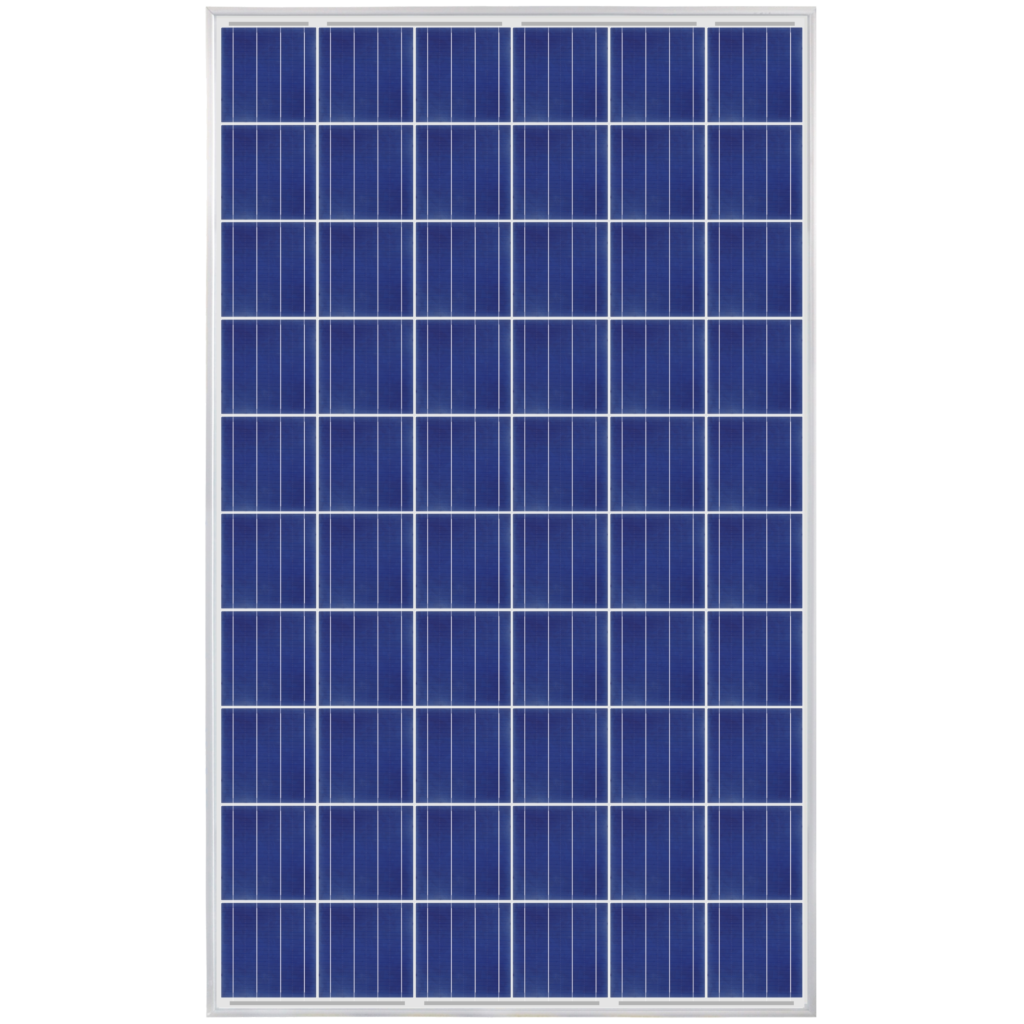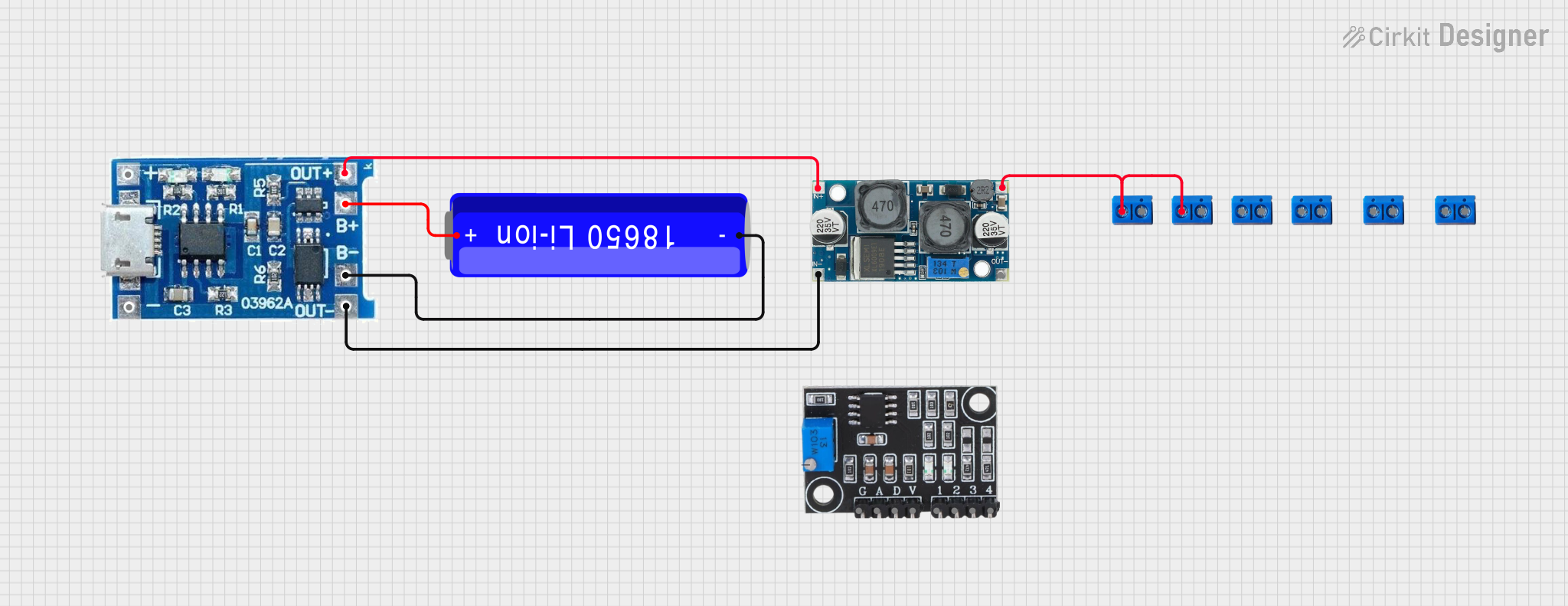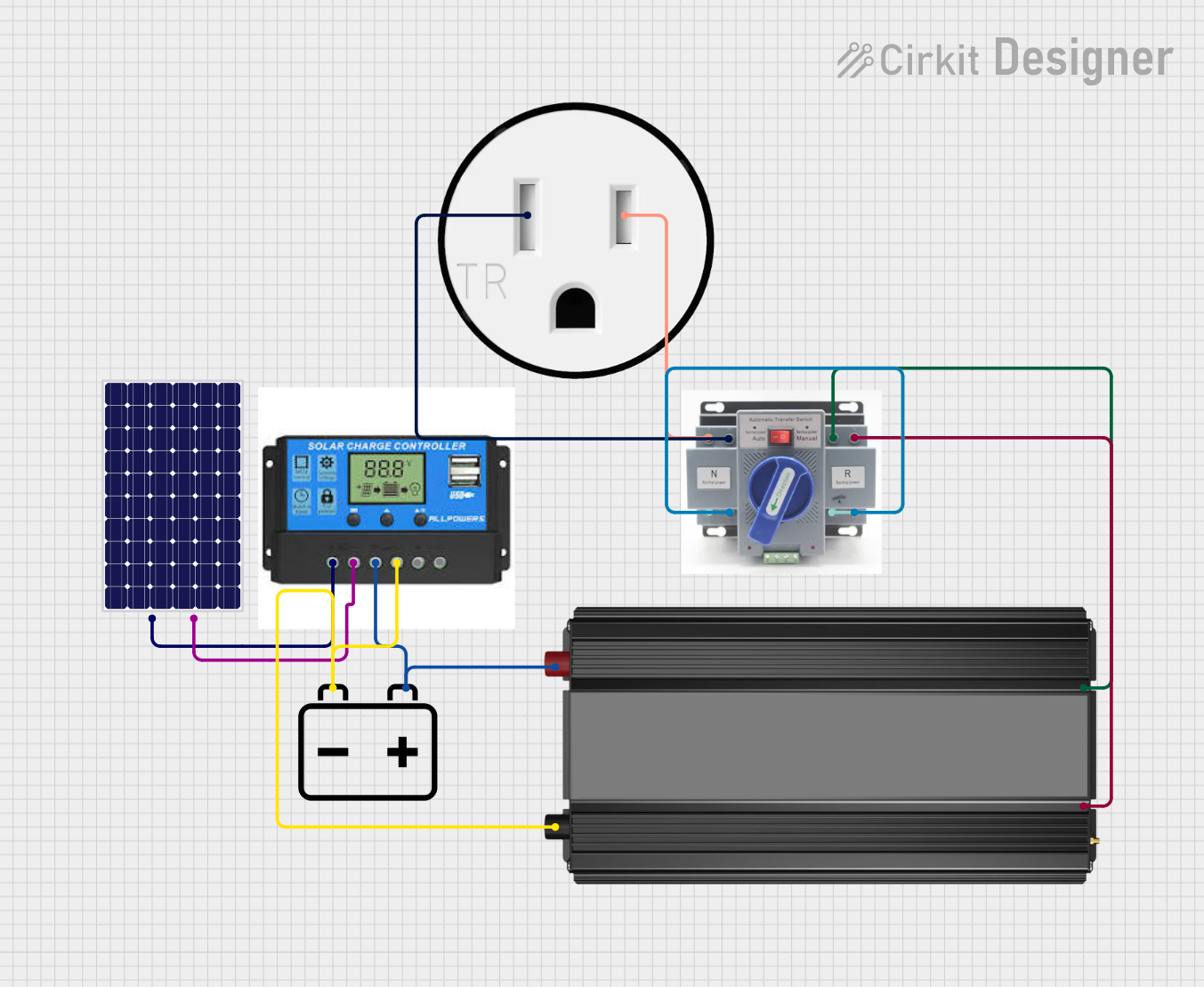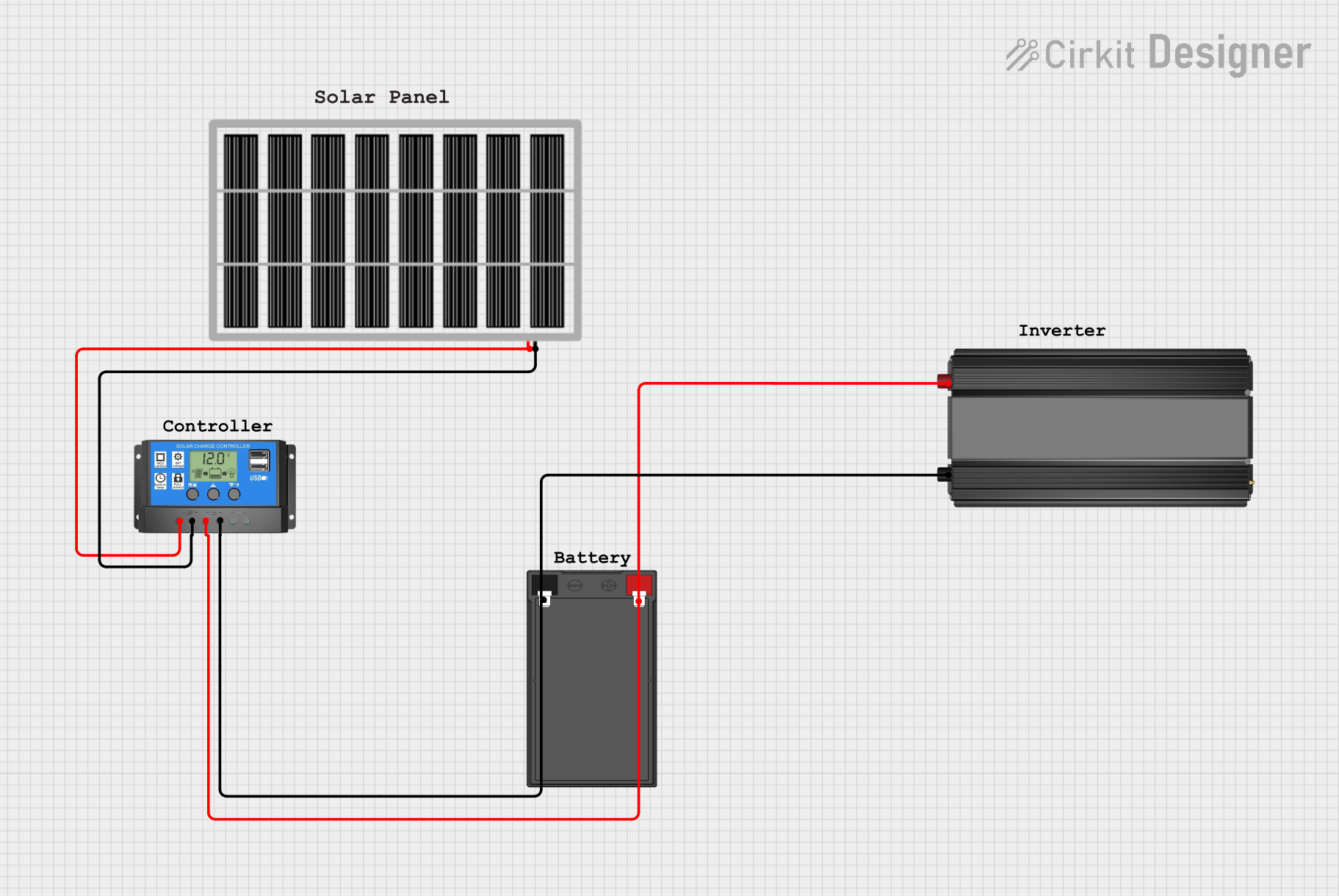
How to Use solar panel: Examples, Pinouts, and Specs

 Design with solar panel in Cirkit Designer
Design with solar panel in Cirkit DesignerIntroduction
A solar panel, manufactured by Power Supply (Part ID: Panel), is a device that converts sunlight into electrical energy using photovoltaic (PV) cells. It provides a renewable and sustainable source of power, making it an essential component in modern energy systems. Solar panels are widely used in residential, commercial, and industrial applications to generate electricity, reduce carbon footprints, and promote energy independence.
Explore Projects Built with solar panel

 Open Project in Cirkit Designer
Open Project in Cirkit Designer
 Open Project in Cirkit Designer
Open Project in Cirkit Designer
 Open Project in Cirkit Designer
Open Project in Cirkit Designer
 Open Project in Cirkit Designer
Open Project in Cirkit DesignerExplore Projects Built with solar panel

 Open Project in Cirkit Designer
Open Project in Cirkit Designer
 Open Project in Cirkit Designer
Open Project in Cirkit Designer
 Open Project in Cirkit Designer
Open Project in Cirkit Designer
 Open Project in Cirkit Designer
Open Project in Cirkit DesignerCommon Applications and Use Cases
- Residential rooftop solar systems for powering homes
- Off-grid power systems for remote locations
- Solar-powered devices such as lights, fans, and chargers
- Integration into solar farms for large-scale energy production
- Portable solar panels for camping and outdoor activities
- Backup power systems in combination with batteries
Technical Specifications
Below are the key technical details for the Power Supply solar panel (Part ID: Panel):
| Parameter | Value |
|---|---|
| Maximum Power (Pmax) | 100W |
| Open Circuit Voltage (Voc) | 21.6V |
| Short Circuit Current (Isc) | 6.1A |
| Maximum Power Voltage (Vmp) | 18V |
| Maximum Power Current (Imp) | 5.56A |
| Efficiency | 18% |
| Operating Temperature | -40°C to +85°C |
| Dimensions | 1200mm x 540mm x 35mm |
| Weight | 8kg |
| Connector Type | MC4 |
Pin Configuration and Descriptions
Solar panels typically have two output terminals for electrical connections:
| Pin | Description |
|---|---|
| Positive (+) | The positive terminal for output voltage |
| Negative (-) | The negative terminal for output voltage |
Usage Instructions
How to Use the Solar Panel in a Circuit
- Positioning the Panel: Place the solar panel in a location with maximum sunlight exposure. Ensure the panel is angled correctly based on your geographic location to optimize energy generation.
- Connecting to a Charge Controller:
- Connect the positive terminal of the solar panel to the positive input of the charge controller.
- Connect the negative terminal of the solar panel to the negative input of the charge controller.
- The charge controller regulates the voltage and current to prevent overcharging of batteries.
- Connecting to a Battery (if applicable):
- Connect the charge controller's output terminals to the battery terminals (positive to positive, negative to negative).
- Connecting to a Load: Attach the load (e.g., lights, appliances) to the output terminals of the charge controller or battery, depending on the system design.
- Monitoring: Use a multimeter or monitoring system to check the voltage and current output of the panel.
Important Considerations and Best Practices
- Avoid Shading: Ensure the panel is not shaded by trees, buildings, or other objects, as shading significantly reduces efficiency.
- Use Proper Cables: Use cables with appropriate current ratings to prevent overheating or voltage drops.
- Install a Fuse: Add a fuse between the panel and the charge controller for safety.
- Clean Regularly: Dust and debris can reduce efficiency. Clean the panel surface periodically with water and a soft cloth.
- Avoid Reverse Polarity: Ensure correct polarity when connecting the panel to other components to prevent damage.
Example: Connecting to an Arduino UNO
To measure the voltage output of the solar panel using an Arduino UNO, you can use a voltage divider circuit. Below is an example code snippet:
// Define the analog pin connected to the voltage divider
const int solarPin = A0;
// Define the voltage divider ratio (e.g., 10k and 2k resistors)
const float voltageDividerRatio = 6.0; // Adjust based on your resistor values
void setup() {
Serial.begin(9600); // Initialize serial communication
}
void loop() {
int sensorValue = analogRead(solarPin); // Read the analog value
float voltage = (sensorValue * 5.0 / 1023.0) * voltageDividerRatio;
// Print the measured voltage to the Serial Monitor
Serial.print("Solar Panel Voltage: ");
Serial.print(voltage);
Serial.println(" V");
delay(1000); // Wait for 1 second before the next reading
}
Note: Ensure the voltage divider reduces the panel's maximum voltage to within the Arduino's input range (0-5V).
Troubleshooting and FAQs
Common Issues and Solutions
Low Power Output
- Cause: Insufficient sunlight or shading.
- Solution: Reposition the panel to receive maximum sunlight and remove any obstructions.
No Output Voltage
- Cause: Loose or incorrect connections.
- Solution: Check all connections, ensuring proper polarity and secure connections.
Overheating
- Cause: Poor ventilation or excessive current draw.
- Solution: Ensure proper airflow around the panel and use components within their rated limits.
Battery Not Charging
- Cause: Faulty charge controller or incorrect wiring.
- Solution: Verify the charge controller's functionality and check the wiring.
FAQs
Q: Can I connect the solar panel directly to a battery?
A: It is not recommended. Use a charge controller to regulate the voltage and prevent overcharging.Q: How do I calculate the energy output of the panel?
A: Multiply the panel's power (Pmax) by the number of sunlight hours per day. For example, a 100W panel with 5 hours of sunlight produces 500Wh/day.Q: Can the panel be used indoors?
A: Solar panels require direct sunlight for optimal performance. Indoor use is not effective unless exposed to strong artificial light.Q: How long does a solar panel last?
A: Most solar panels have a lifespan of 25-30 years with proper maintenance.
By following this documentation, users can effectively integrate the Power Supply solar panel (Part ID: Panel) into their energy systems and maximize its performance.